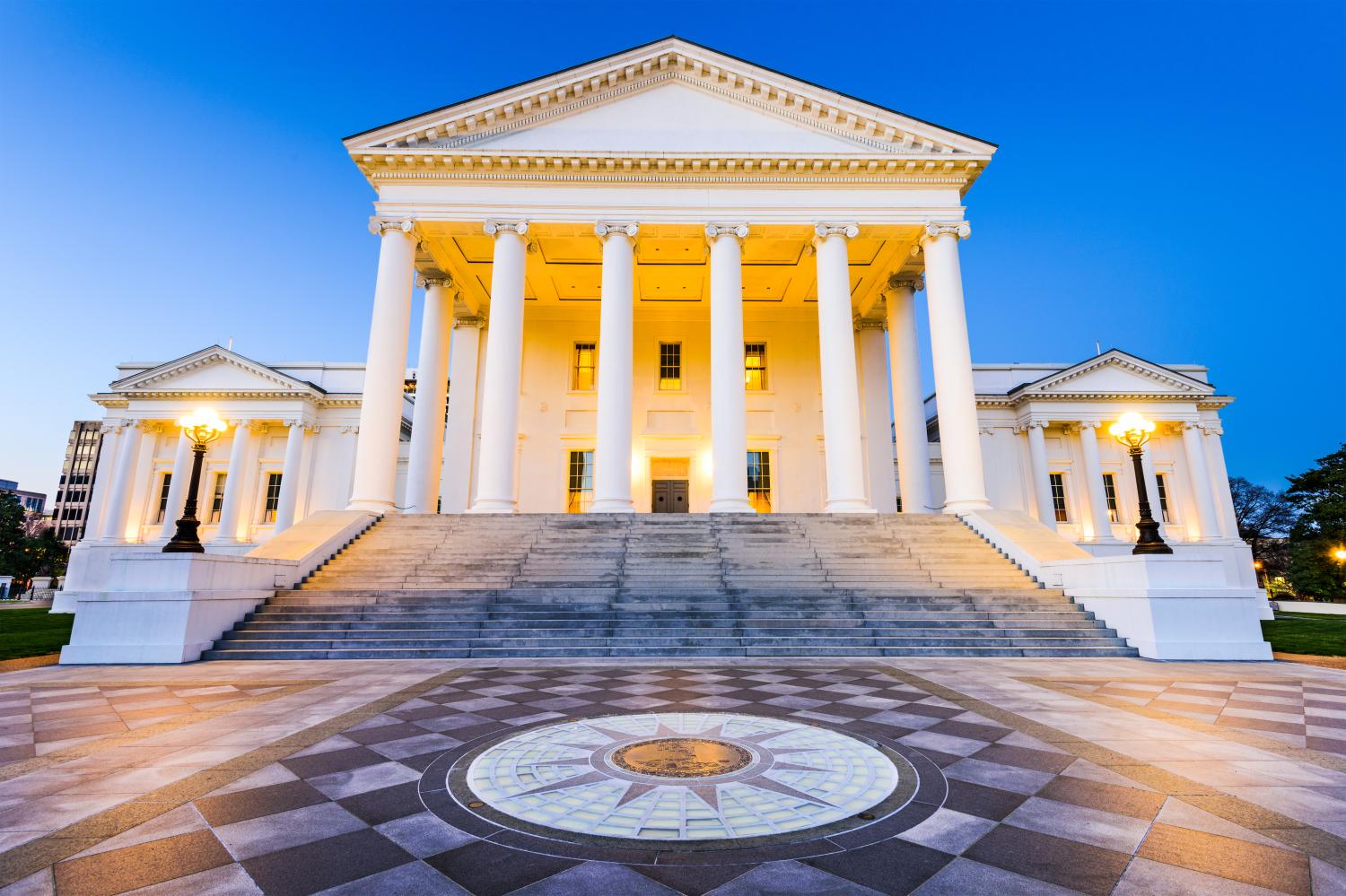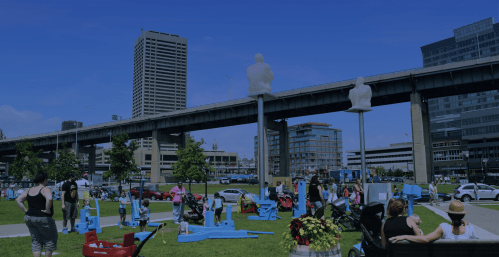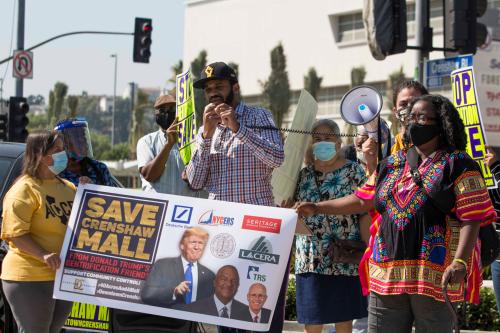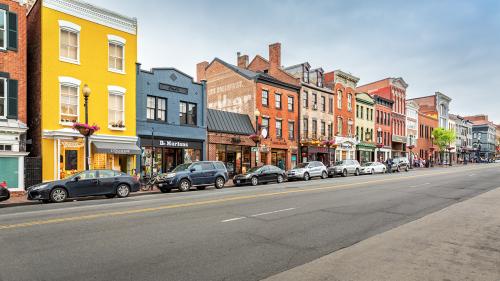Federal, state, and local policies profoundly affect nearly every aspect of American neighborhoods, including their economic vitality, their shape and form, their social fabric, and their forms of self-governance. These policies do not affect neighborhoods equally—they convey benefits on some and burdens on others. A clear result is the growing divergence between prosperous neighborhoods and those that struggle against social and economic barriers.
The crises of 2020 accelerated this divergence and offered a glimpse of what the future holds for the nation if policymakers fail to reconsider some of the long-standing policies that have created and reinforce these conditions. Fortunately, the crises also provided a moment of clarity for the many leaders who saw the costs and risks of remaining on the same path.
An increasing number of public, private, and civic leaders now recognize that new place-led policies and practices are essential to addressing the nation’s long-standing spatial divides. And as they continue to promote recovery, policymakers must use a finer grain of analysis so they can address the geography of inequality within and between regions, focusing on “places” as a unit of intervention.
When devising strategies to achieve these outcomes, it might be tempting to focus primarily on federal action because of the broad reach of federal policies, or on local action in order to customize interventions to the needs of a specific community. But state policies are also critical components of any comprehensive, place-focused strategy. States were instrumental in creating the conditions in places both before and during the pandemic, and will play decisive roles in shaping the recovery.
Notably, the scope of local authority is determined by state law, and states can expand or constrict the exercise of local power. Some states grant local governments the broad powers of self-governance through the operation of home rule, while others retain more power at the state level through the operation of the Dillon Rule.
States also provide a substantial amount of investment in places. These investments come from states’ own revenues and assets or federal resources that they manage. In 2020, more than 65% of state expenditures were from states’ own resources, and only 32.4% from federal funds. States spent nearly 70% of their budgets on health services, education, transportation, corrections, and public assistance. Every other program or activity that state governments support was funded from the remaining 30.7% of the budget. This includes programs that are critical to places, such as funding for economic development, environmental protection, parks and recreation, natural resources programs, housing, general aid to local governments, and public health programs.
As a share of state budgets, federal funds increased by more than 14% in 2020—the highest annual growth rate since the Great Recession. The increase is largely due to the additional federal aid states received in response to the COVID-19 pandemic, including through the CARES Act and changes to Medicaid.
Figure 1: Most states constrain local autonomy

State leaders who are committed to place-based strategies that promote shared prosperity and economic inclusion are not focused only on the barriers that exist in their cities, towns, and regions, but on those that exist across the broad geographies of entire states. This can be a substantial challenge in an environment that is politically charged or where state leaders and the people they serve are deeply divided. In such an environment, a policy that is viewed by some as appropriately “empowering” local leaders may be viewed by others as “enabling” runaway local leaders.
To combat this divisiveness, states can invest in efforts to promote shared values and bridge gaps in understanding and perception among its diverse populations around the state. States can also support innovation to increase and diversify community engagement. With new technologies, states can use tools that engage communities in new ways, reach broader populations for input into decisionmaking, and leverage private funds for public projects.
Changes to state policy are critical to paving the way to a different future. As state leaders implement strategies for long-term recovery, they should exercise all of their authorities and focus their resources on building stronger neighborhoods. These efforts should combat economic isolation, promote opportunity, create flexible and healthy environments, strengthen community identity, and empower residents to exercise their voice. Many strategies to achieve these aims have already been implemented and tested by creative policymakers in other states. Those seeking solutions need only look to the successful models described in this report.
A new report suggests that states have four major roles that can dramatically affect the prospects of places:
- Setting the rules: State law and policy set many of the parameters by which governments, institutions, and people in the state may legally act or interact. For example, in Michigan, through its SmartZone program, the state grants local governments with the best plans and strongest partnerships the authority to create and use tax increment financing entities to build innovation infrastructure and finance the operations of business incubators in designated SmartZones.
- Providing funding and resources: States manage substantial streams of funding from their own sources and distribute federal funds, often with some discretion; how these dollars are directed can tilt the scales for or against places. For example, in Virginia, the state maintains a program that offers services, financial assistance, and technical assistance to communities seeking to revitalize their historic commercial districts.
- Enabling cooperation: States are better positioned than cities or counties to stimulate cooperation across jurisdictions and sectors. States can share data and information, use state convening power, and provide financial or regulatory incentives and structures to promote collaboration and networking across cities, counties, regions, and state boundaries. For example, the state of Indiana directs resources to locally developed community and economic development solutions that promote cooperation in rural regions.
- Modeling behavior: Although less important than its other roles, states can act as models of good policy and behaviors in order to encourage the same in other actors. For example, to leverage past investments and control the spread of sprawl, Maryland state law restricts spending for growth-related projects to existing communities and places designated by local governments for future growth—collectively known as Priority Funding Areas.
These roles empower state policymakers to dramatically affect economic, social, environmental, and civic conditions in places.
By creating neighborhoods that are more connected, vibrant, and inclusive, state leaders will not only build stronger local communities, but stronger states and a stronger nation as well. It is a substantial but necessary investment in making the nation and all of its communities more resilient and prepared for the future shocks that are sure to come.
The Brookings Institution is committed to quality, independence, and impact.
We are supported by a diverse array of funders. In line with our values and policies, each Brookings publication represents the sole views of its author(s).








